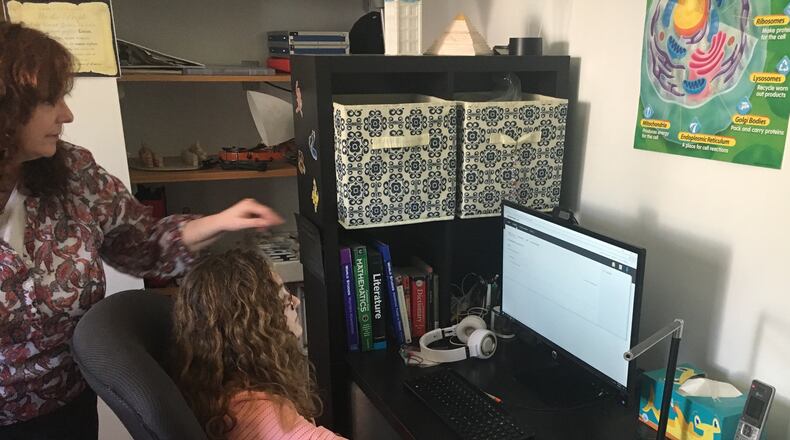Most districts started July with a two-path option for students — come to school five days a week (with many safety precautions in place), or choose a fully online approach for the first quarter or semester.
Several large school districts were still on that path as of Friday, including Kettering, Springboro, Northmont and Fairborn. Other districts, including Dayton, Tecumseh and Yellow Springs, started with that assumption, but eventually decided to go all online for the first quarter because of health concerns. Districts are reviewing their options daily, however, and several are expected to make more changes in the weeks ahead.
“We had to take into consideration, if we bring students back to school, are we going to increase that spread (of disease), even if we have all of our PPE and social distancing practices in place?” Dayton Superintendent Elizabeth Lolli said, pointing to high rates of infection in parts of her district.
More Montgomery County schools may consider a change as the county’s public health department on Friday recommended schools start fall classes online.
Other districts are tying their back-to-school plan to the state’s Public Health Advisory Alert System, which uses several measures to weigh the COVID-19 risk in a community. Beavercreek, Troy and Tipp City are using these flexible systems, which call for real-time school changes based on disease conditions.
When counties are at the lower-risk Level 1 or Level 2, students would attend school in-person, five days per week. At Level 3, students would attend two days per week and learn from home the other three days, creating more social distancing inside school buildings. At Level 4, all learning would be remote.
“We have to remain flexible and responsive to local conditions,” Troy Superintendent Chris Piper said. “School is going to look different, but it’s going to be a high-quality experience, and our teachers are very excited to get students back in their classrooms.”
Others schools have slightly different tweaks. Carroll High School’s primary model is currently in-person classes, but for the first month, students will learn from home each Wednesday.
Credit:
Credit:
For the first three weeks, Bellbrook’s plan calls for the student body to be split in two, with each group physically attending school two days a week. Then all students would be in school together starting Sept. 8.
Huber Heights calls for fully online learning the first two weeks, then a rolling return to in-person school over an eight-week span, with different grade levels going back at different times.
“In studying school restarts throughout the world, we can learn from their successes and failures,” Huber Heights’ plan says. “The countries that have been most successful in reopening safely have had gradual reopening plans with safety features in place.”
Some school surveys have shown gradual growth in the number of families who want their students to start the year fully online. But all online approaches are not the same.
Springboro schools’ plan says students choosing online education for the first semester will have live classes through Google Meet or Google Classroom “with Springboro teacher-led instruction.”
In other districts, the full-time online model is much more hands-off. Fairborn’s online option through the Greene County Educational Service Center will not feature live, direct instruction, according to their plan, but a local teacher will check in with each student in an “advocate” role.
Schools using a third-party vendor vary from Oakwood with SchoolsPLP, to Kettering with Apex Learning, to Lebanon with Virtual Learning Academy. In most cases, that means a learning curve for students new to that viewing interface.
The Dayton Early College Academy charter school (DECA) is doing first-quarter online learning with its own teachers. But they still know it will be a challenge.
“We know that remote learning is not how most children are best suited to learn, but these are extraordinary times,” Superintendent Dave Taylor said. “It remains our greatest hope to have students return to our building as soon as it is safe to do so. In the meantime we have every intention of providing a rigorous, engaging remote learning education.”
About the Author


